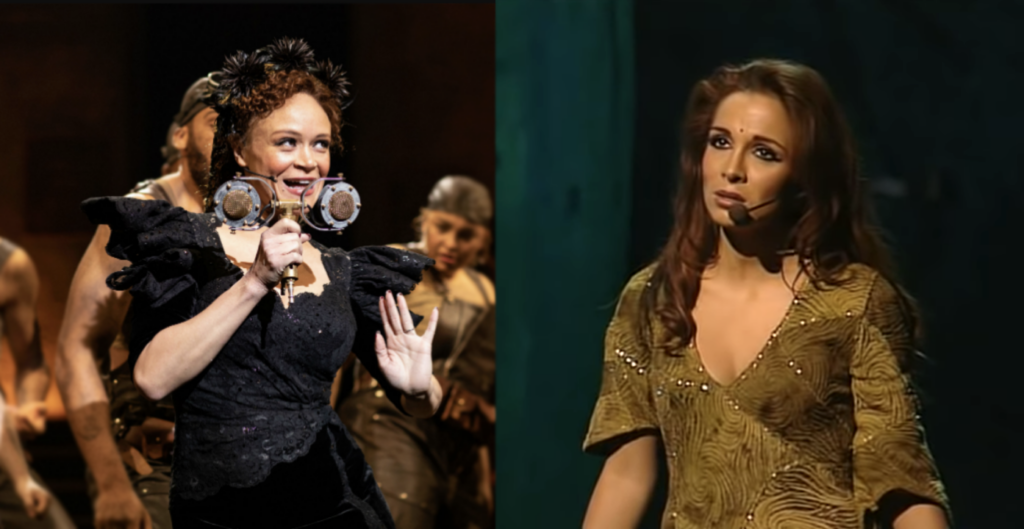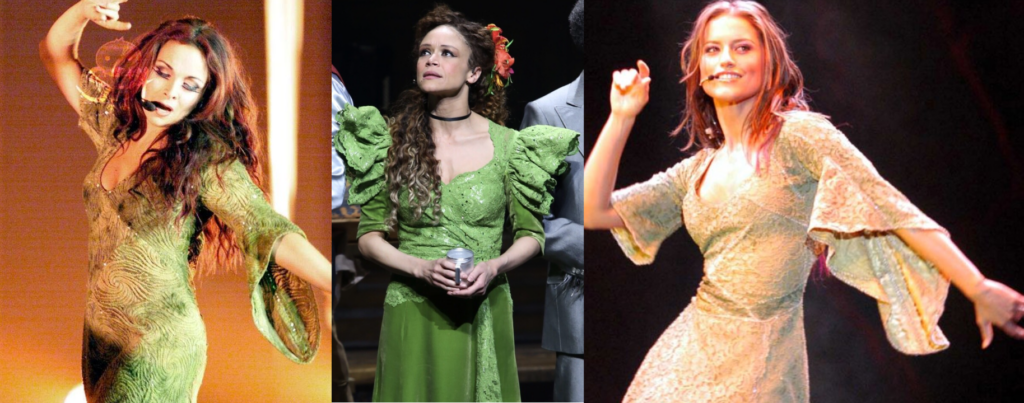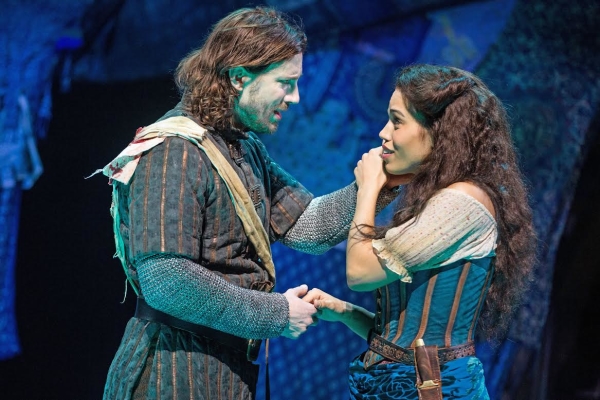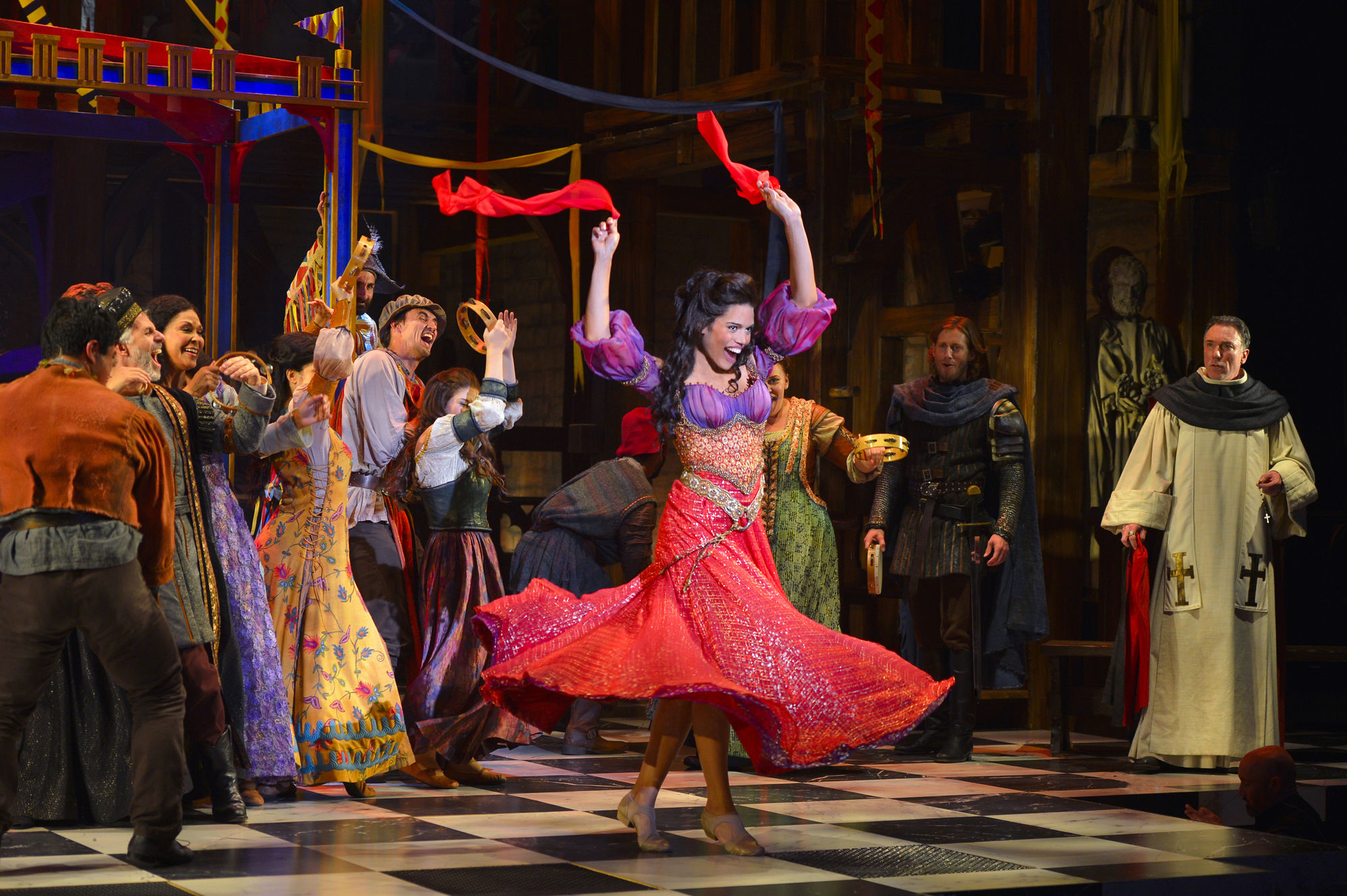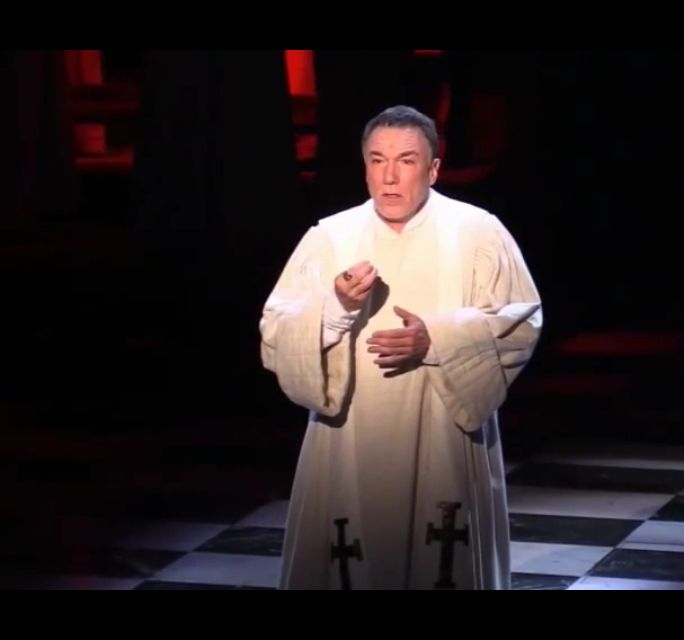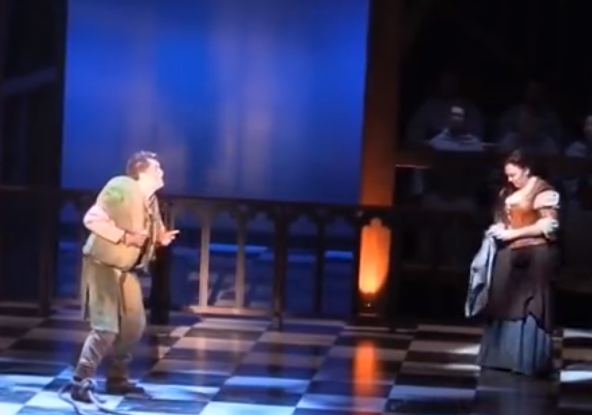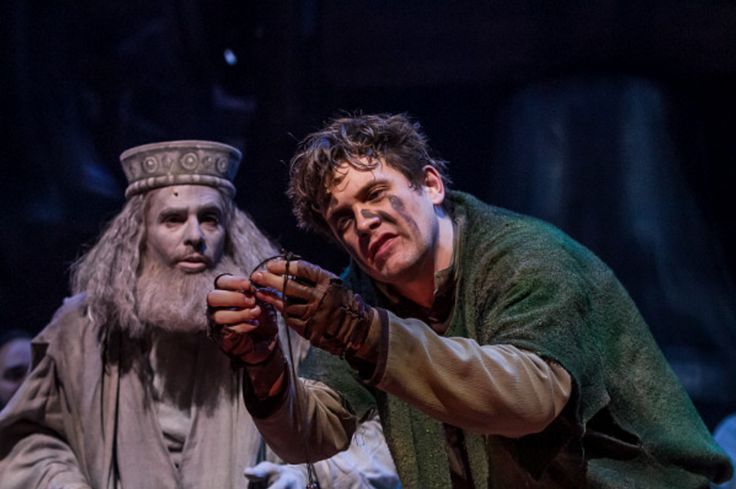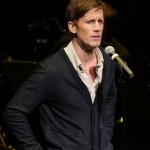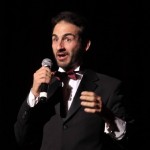~there are amazon affiliate links in this post~
Recently I saw the touring cast of Hadestown. I went into the show blind which I wouldn’t recommend for myself again. I didn’t love the show as I was watching but after ruminating on it and listening to the songs again I’ve come around and I do very much enjoy the show and would defiantly see it again. Also the touring cast was amazing.
Now just because I like it doesn’t mean that Hadestown and Hunchback musicals (The Disney version/Notre Dame de Paris mainly) have much do with each other outside of being musicals and that I like them. However they’re a few similarities and parallels, more than I thought, and some are quite shallow while others are deeper.
Also both shows revolve around religious iconography.
Spoilers for the shows.
An Actor
The biggest connection between the Hadestown and a Hunchback musical is Patrick Page. Page originated both Frollo in the American version of the Disney musical at La Jolla and PaperMills Playhouse and Hades in Hadestown in both the workshops and in the original Broadway cast.
First he feared the Hellfire and then he become lord of it.
A Song
This is more is similarity. The second act of Hadestown opens with a song called “Our Lady of the Underground” which in truth is just a reminder because “Our Lady’ and “Notre Dame” have the same meaning and to have lyrics using “Our Lady” in a musical is a direct route in my mind for a connection.
HOWEVER there is an actual “Our Lady of the Underground” Notre Dame de Sous-Terre, it is a statue at Chartres. So it might be less of Notre Dame thing and more of the connection to that but on that pesky other hand, Anaïs Mitchell was inspired by Les Misérables and wouldn’t you know it, Victor Hugo wrote both Les Misérables and Hunchback of Notre Dame. So maybe it’s not a shallow connection after all.
Both shows also more or less exist because of Les Misérables. One exists in its shadow in North America and the other reveals in its shade, guess which one is which.
A Costume
Not that Esmeralda has monopoly on green costumes that use velvet and lace but if I see a green musical costume that uses those fabric I’m going to think of the original version of Esmeralda’s green dress & the Italian version of the green dress.
This is more of a reminder though an actual connection. Also in BOTH cases both green costumes are the act one costume and the Act 2 costume is more subdue and reflects the characters’ circumstances. For Esmeralda it is her being a prisoner and for Persephone it’s being in the Underworld/Hadestown as well as a strain of her marriage which is also messing everything up. Both characters are “trapped” so to speak.
Again this isn’t not a strong connection either, characters get costumes changes that reflect their mood/plot all the time but it’s at a “hmm that’s sort of interesting” similarity.
Swinging Set Pieces
Impressive set pieces in musicals is nothing new, it’s part of medium which adds spectacle and draws the audience into the experience.
Hadestown and Notre Dame de Paris both have swinging elements. Both are conical swinging metal pieces however I do think Hadestown does this better. In Notre Dame de Paris during “Les Cloches” there are three swinging bells over the stage that goes from side to side over the stage and are raised and lowered with a performer hanging from each them. This all done over the stage. It’s interesting and impressive but since it just exists over the stage space it doesn’t allow for the audience to participate, it’s spectacle.
In Hadestown during “Wait for Me,” as Orpheus goes into the underworld there are swinging lights that extend out across the stage over the audience, stage size and positing willing. There is some about shining lights into the audience from the stage that is intriguing. The swinging lights are very evocative especially since “Wait for Me” is one of the stand out songs of the show.
A Tragic Heroine
One to one, Esmeralda and Eurydice are very different in personality and temperament. However both ladies are worldly in that they have traveled widely without being able to lay down roots. For Eurydice she is lonely, hungry and homeless and goes from place to place to eke some kind of existence till she meets and marries Orpheus. Esmeralda is a traveler and she goes around Europe with her group led by Clopin until they reach Paris, hoping for that asylum.
In either case both ladies meet a tragic end. In Esmeralda’s case her death is more concrete and Eurydice’s is more debated. Did she die in the storm or the snake like the myth? What was the deal she made with Hades? All in all it doesn’t matter as the optics are both ladies meet a tragic end and the one who loves them the most follows them into the afterlife.
Also both ladies are likened to birds, Eurydice to a songbird and Esmeralda, in Notre Dame de Paris, to a swallow.
Also as a side tangent, in the original myth Eurydice dances through a meadow and Esmeralda is a dancer.
A Bard
Both Gringoire and Orpheus are poets. Orpheus is more of singer-songwriter but Hades does refers to him as a poet in “Hey, Little Songbird.” They are both poor and both marry the tragic heroine though Esmeralda does not love him.
Social Messages
As the story has evolved from the original book, Hunchback narratives tends to lean heavily toward social commentary. Many themes can be employed but the big one is social inequality for marginalized peoples. Notre Dame de Paris leaned into issues of its day with asylum seekers seeking “sanctuary” which is a part of the original story.
Hadestown also takes into account social issues into the narrative as well. The show also goes for the blight marginalized poor peoples who are very much exploited by the powerful, in this case literal Gods, as well as Global warming. One thing that is addressed a lot is that seasons are all wrong because of the Gods. Orpheus could be seen as tiring to fix the climate by fixing Hades and Persephone’s marriage as well as saving Eurydice who was taken to Hadestown because she was caught in a storm.
Thirteen Years
It took Anaïs Mitchell thirteen years to develop Hadestown from initial conception to the show opening on Broadway in 2019. Richard Cocciante had Belle as a melody thirteen years prior to the Notre Dame de Paris’ premier in Paris. I think I misunderstood the special that stated this information and wrongly thought the show was in development for thirteen years but from the subtitles it was more like five with just melody of existing thirteen years prior the show’s premier.
The Cruel Hand of the Fates
In Greek Mythology The Fates are three sisters: Clotho (the Spinner), Lachesis (the Allotter), and Atropos (the Inevitable). They are also called Moirai, personification of destiny.
In Hadestown the Fates are a greek chorus who are symbolize conscience, doubt and anxiety. They also hyper-fixate on Eurydice. They are antagonize her and defiantly seem to delight in her suffering. They also plague Orpheus at the climax with the song “Doubt Comes In” as the lovers walk out the underworld. These three ladies are very much personified intrusive thoughts.
The Fates in Hadestown act more like concept of Ananke which is a conceptual force in The Hunchback of Notre Dame however the connection is deeper. Ananke, in Orphic tradition,* is a Goddess and the mother of the Fates. She is the personification of inevitability, compulsion and necessity. Her Roman named is Necessitas.
So it does seem that the Fates in Hadestown act more like Ananke but “The Fates” are more accessible to a general audience plus the all harmonies they sings are sublime.
Then there is Notre Dame de Paris. As previously stated Ananke is a big aspect in the novel. It is the word that inspired Frollo and why Esmeralda didn’t fight back when Frollo dragged to the gibbet at the end of the novel for his final crazed ultimatum.
Notre Dame de Paris has two songs that apply to Ananke and Fate. One is called “Anarkia,” which is a short song that fills in some plot points. Basically “Anarkia” which is just written on a wall, like in the novel, Gringoire asks what the word means and Frollo exclaims it means “Fatality.” Which comes from the latin “fatalis” which means “decreed by fate,” so technically correct. Weird fact: the English version changes the word to “Anarchy” and Frollo says it means “Destiny” which is just wrong.
The second song involving the subject fate closes Act I and is aptly named “Fatalité.” It’s a very dramatic yet simple song that boils down to the point that fate/destiny doesn’t care if you’re a noble or a peasant; all life is her hands. Fate is said to be the “Mistress of our destinies” so it does harkens back to greek mythology.
Despite Ananke being an omnipotent atmospheric force in novel it’s relegated to only two songs and that is more than it gets in most other versions.
I do think that it would interesting to have a Notre Dame stage musical that leans into the concept of Ananke as a character, as in a combination of The Fates and Death from the Roméo + Juliet musical.
A River
And finally Dennis DeYoung, a founding member of Styx, wrote a Hunchback musical. Styx is the river of the underworld which is a in Hadestown. (perhaps this should be the next version for review)
I suppose there could be more connections and similarities between the musicals but that’s all for now.
*or Orphism, named for Orpheus


